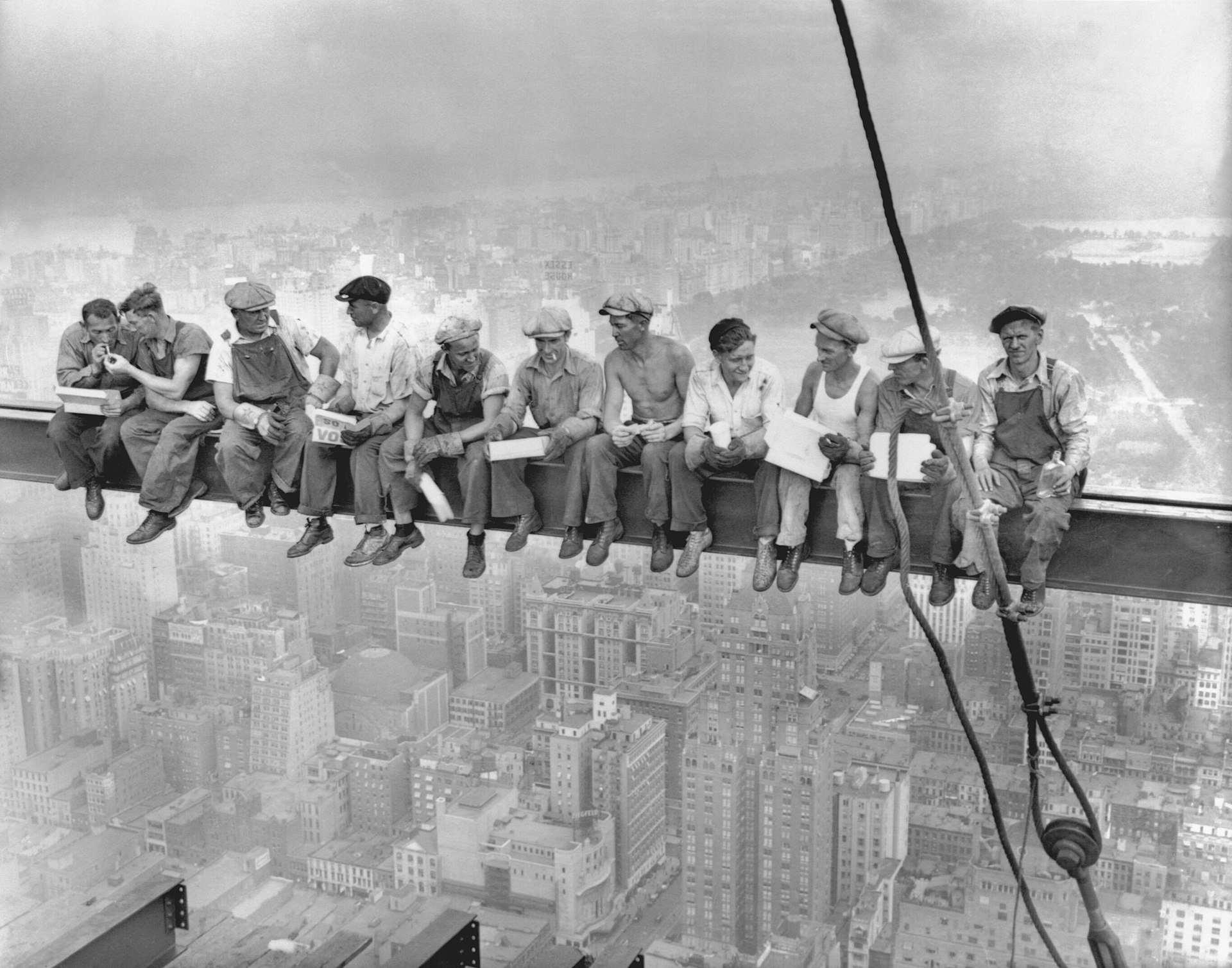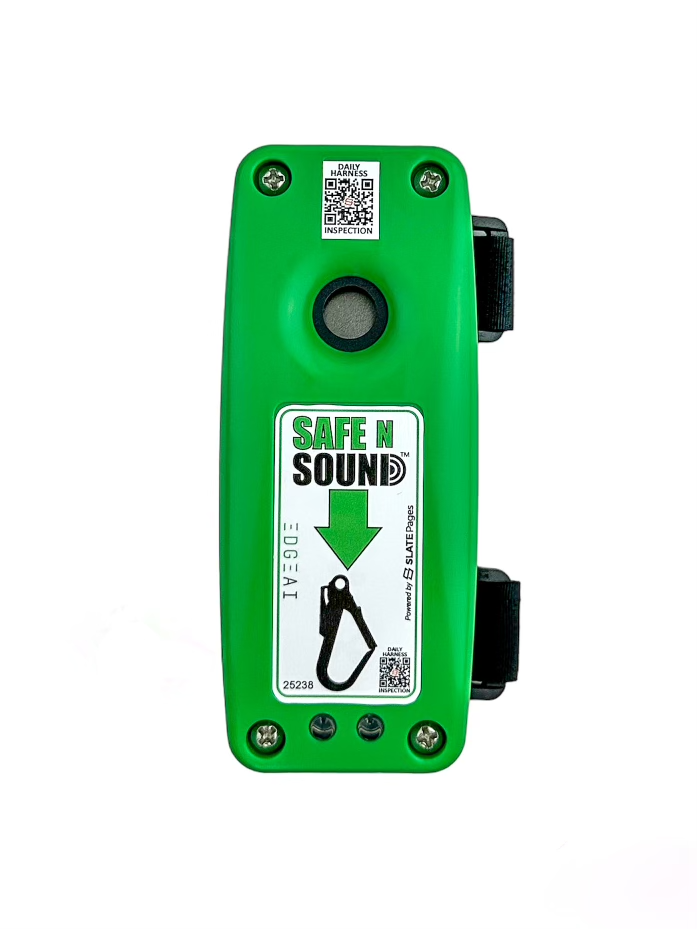Prevent MEWP Fall Accidents With Safe n Sound
Safety Harnesses & Lanyards
The Safety Harness has been around for 100 years. Started with a rope tied around your body and advanced to a safety belt. Body belts did save lives but clearly had their problems. If the lanyard was too long, you could break a back or dislocate hips. Even if the worker survived, how do you get him to safety?
Thousands and Thousands of workers have fallen to their death as the safety Harness and Lanyard have been perfected.
There are four classes of fall protection systems:
Class 1
Body belts (single or double D-ring), designed to restrain a person in a hazardous work position, prevent a fall, or arrest it completely within 3 feet (90 cm)Class 2
Chest harnesses, used only with limited fall hazards (including no vertical free fall), or for retrieving persons, as from a tank or bin.Class 3
Full body harnesses, designed to arrest the most severe free falls.
Class 4
Suspension belts, independent supports used to suspend a worker, such as boatswain chairs or raising or lowering harnesses.[5] Full Body Harnesses have become the most chosen when keeping our workforce safe from falls.
OSHA & Fall Protection
OSHA was created in 1971 and Fall Protection was one of their first priorities.
Be it enacted by the Senate and House of Representatives of the United States of America in Congress assembled, That this Act may be cited as the "Occupational Safety and Health Act of 1970."
OSHA began to develop and enforce fall protection standards for industries such as construction, mining, transportation, and manufacturing. OSHA’s involvement in these industries changed employers’ attitudes regarding fall safety. OSHA conducted inspections of workplaces (announced and unannounced), and failure to meet their standards gave new incentives for employees to provide appropriate safety protocols. Expensive fines mounted for employers who were noncompliant, and additionally, employers’ litigation costs from fall-related injuries increased as employees began to advocate for their rights to safe working conditions. Changes resulted throughout the construction industry to incorporate passive (guardrails and gates) and active (ropes and body harnesses) fall protection systems for employees.
OSHA quickly realized that fall protection equipment was not a one and done. Contractors and workers would purchase and just assume they would last forever.
OSHA came up with 1910.140(a)
Scope and application. This section establishes performance, care, and use criteria for all personal fall protection systems. The employer must ensure that each personal fall protection system used to comply with this part must meet the requirements of this section.
They also specified requirements for lanyards
Self-retracting Lifelines and Lanyards: Self-retracting lifelines and lanyards that automatically limit free fall distance to 2 feet or less must be capable of sustaining a minimum tensile load of 3,000 pounds applied to the device with the lifeline or lanyard in the fully extended position. 29 CFR 1926.502(d)(12).
Self-retracting lifelines and lanyards which do not limit free fall distance to 2 feet or less, ripstitch lanyards, and tearing and deforming lanyards must be capable of sustaining a minimum tensile load of 5,000 pounds applied to the device with the lifeline or lanyard in the fully extended position. 29 CFR 1926.502(d)(13).
Part Number Title: Safety and Health Regulations for Construction
Subpart: 1926 Subpart M
Subpart Title: Fall Protection
Standard Number:
Title: Fall protection systems criteria and practices.
1926.502 really focused on fall protection requirements. Daily inspection was required in
Personal fall arrest systems shall be inspected prior to each use for wear, damage and other deterioration, and defective components shall be removed from service.
The Top Fall Protection Manufacturers are
3M / DBI-SALA
Guardian Fall Protection
SafeWaze
FallTech
Super Anchor Safety
Miller Fall Protection
MSA Safety
Safe Approach
MEWPs
What is a MEWP?
Workers often use mobile elevating work platforms, or MEWPs, to perform tasks from an elevated position. such as cleaning, construction, maintenance, inspection, testing, and stock picking. An MEWP consists, at a minimum, of a motorized vehicle component and a lifting component.
Types of MEWPs
MEWP’s are covered by ANSI. "ANSI” stands for the American National Standards Institute.
ANSI developed the "new ANSI A92 standard" in 2018 and published them in 2019.
And they became effective in 2020.
ANSI now classifies MEWP’s
By group
By type
MEWP group is determined by the platform’s location in reference to the tipping line
Group A machines have a design that does not allow the main platform to extend beyond the tipping line. Scissor lifts are part of this group.
Group B machines have platforms that are designed to extend beyond the tipping line. Articulating and telescopic booms are part of this group.
TYPE 1 MEWPs
Type 1 mobile elevating work platform can only move in the stowed position.
That means the platform has to be lowered completely before you can move the machine.
TYPE 2 MEWPs
Type 2 MEWPs have two features:
They can move while the platform is elevated
Their movement is controlled from the chassis (as opposed to within the work platform)
TYPE 3 MEWPS
These are much like Type 2 MEWPs.
But whereas a Type 2 MEWP’s movement is controlled from the chassis, a Type 3 MEWP’s movement is controlled from the work platform.
Types of Lifts
Boom Lift, Articulated
Boom Lift, Crawler
Boom Lift, Telescopic
Boom Lift, Trailer-Mounted
Material Lift
Scissor Lift
Telehandler (Telescopic handler)
Vertical Mast Lift
Lift Manufacturers
JLG
Genie Lift
Snorkel
Niftylift
Ballymore
Teupen
MEC
Haulotte Group
Fall Protection equipment quickly became a key safety component in elevated work and eventually migrated over to Aerial Lifts, Boom Lifts, Scissor Lifts or as known today
Mobile Elevated Work Platforms (MEWP’s). Many manufactures have their own fall protection recommendations in addition to OSHA
JLG
Although not required by either ANSI, CSA or OSHA, JLG recommends that a full body harness be used with a lanyard attached to an authorized lanyard anchorage point when operating JLG scissor lifts or vertical mast products that do not have a 30-in. (76 cm) maximum lanyard length limit. Machines with a 30-in. JLG Recommendations
Genie Lift
Spelled out in the updated ANSI A92 and CSA B354 standards, as well as the OSHA and OHS requirements, fall protection on mobile elevating work platform (MEWPs) is required in the United States and Canada. A $132,598 fine for a willful violation from OSHA should be enough to make most jobsites pay attention to these requirements. But, making sure that the men and women who operate MEWPs as part of their daily operation are safe, well-protected, and that they are able to go home at the end of the day in the same condition they were in when they left for work that morning, must be the number one priority.
The best way to make sure that everyone on an aerial jobsite is in compliance with these requirements is for everyone to be aware of — and understand more — about them.
Let’s start with a general summary of fall protection requirements for Group B MEWPs:
The user is responsible for providing approved fall protection for employees1.
A personal fall arrest system used on a boom type MEWP cannot allow the operator to fall more than 6 ft2.
A personal fall arrest system used on a boom type MEWP cannot allow the operator to come into contact with any lower surface2.
Fall Protection Risks
Every construction company owner biggest worry is being responsible for an injury or even worse… a worker fatality. Knowing a life was lost on a construction site can haunt owners and coworkers for life. Knowing it was your fault due to lack of safety equipment is a disaster for all.
In addition to lasting injure effects and sleepless nights, there is also a heavy financial burden.
OSHA and regulatory fines can cost companies hundreds of thousands of dollars. Lawsuits can even be more.
One area that is often not mentioned is the effect on a workman’s compensation policy. The financial impact can be more than the lawsuits and regulatory fines combined. A willful fall protection injury or death can put some companies into bankruptcy.
Every construction company is given an experience modification rate (MOD) of 1.00 on day one. This multiplier is used to calculate the workman’s compensation hourly charge. By way of example:
If a state has a rate of .20 or 20% of the hourly rate and the company has a MOD rate of 1.10 (due to injuries and losses in the last 3 years)
Employee Pay $ 20.00 X 20% x 1.1 = $ 4.40 per hour workman’s comp charge.
The MOD rate cost the company an increase comp rate of 10%.
Severe fall injuries or deaths can drive a MOD rate to north of 1.50. Your company will no longer be competitive in your industry. In addition to increased cost, most construction projects, public and private, do not allow companies with a MOD rate > 1.0 to bid. Game Over!
Prevent Workplace Falls With Safe n Sound
The Safe & Sound lanyard alarm system protects workers from operating aerials lifts without being securely attached to the lift’s anchor point by sounding a 105 decibel alarm.
This fall protection alarm for aerial lifts is easy to secure and no modifications are required for use. It can be used on any mobile elevating work platform, and works with all retracting lifelines & safety lanyards.
Included: (3) AAA Batteries, replace every 3 months
UPC: 196852024452


